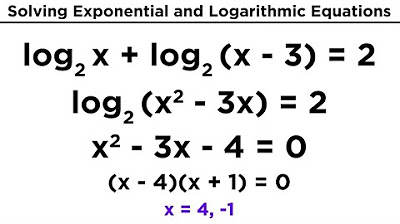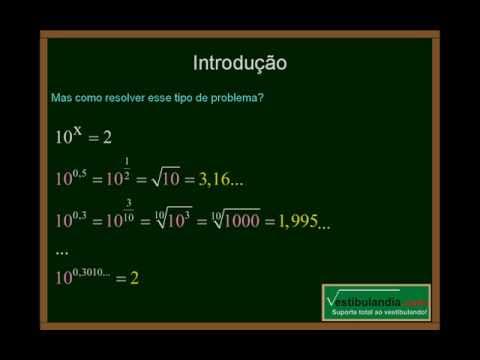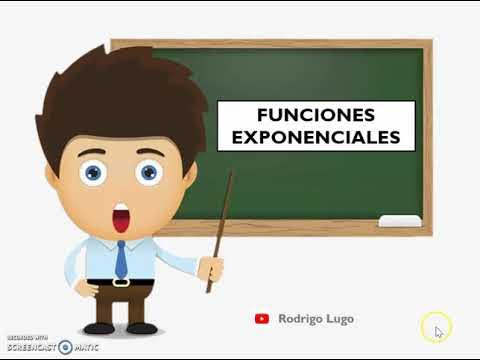Solving Exponential Equations
Summary
TLDRThis script offers a detailed tutorial on solving exponential equations without using logarithms. It covers various examples, starting with converting bases to simplify equations, such as changing base nine to base three. The tutorial demonstrates how to equate exponents once bases match and solve for variables like x. It further explores more complex scenarios, including dealing with squared terms and multiple bases, and concludes with a direct approach to equations that can't be simplified through base conversion, necessitating the use of logarithms for exact solutions.
Takeaways
- 🔢 Changing the base of an exponential equation can simplify solving for x, like converting 9 to 3^2.
- ➡️ Once bases are the same on both sides of the equation, set the exponents equal to each other.
- 🧮 Solving exponential equations often involves simplifying both sides to the same base, then isolating x.
- 📝 For more complex cases, like non-integer bases or when base changes aren't possible, logarithms can be used.
- ✔️ Use the properties of exponents, such as multiplication and power rules, to simplify exponential expressions.
- 💡 Taking the log or natural log of both sides helps solve exponential equations with different bases.
- ✖️ Quadratic factoring techniques can also be used when the equation is quadratic in form.
- 📏 In equations where a common base cannot be found, logarithms or natural logs offer a useful solution.
- 🔁 Exponent rules allow for conversion between forms like 27 = 3^3 or 81 = 3^4 to make solving easier.
- ✏️ The final solutions are often verified by back-substitution or using a calculator for approximate values.
Q & A
How do you solve the equation 3^(x+2) = 9^(2x-3) without using logarithms?
-You can change base 9 to base 3 since 3^2 = 9. Then, replace 9 with 3^2 and multiply the exponents: 2x - 3 becomes 2*(2x - 3) = 4x - 6. Now, with the same base, equate the exponents: x + 2 = 4x - 6. Solve for x to get x = 8/3.
What is the common base to convert 8 and 16 for the equation 8^(4x-12) = 16^(5x-3)?
-The common base is 2, since both 8 and 16 are powers of 2. Replace 8 with 2^3 and 16 with 2^4, then multiply the exponents accordingly.
How do you handle the equation 27^(3x-2) = 81^(2x+7)?
-Since 27 is 3^3 and 81 is 3^4, replace them with their base 3 equivalents. Then, equate the exponents: 3*(3x-2) = 4*(2x+7). Solve for x to find the value.
What is the value of x in the equation 3^x = 8?
-You can use logarithms to solve this. Taking the log of both sides gives x * log(3) = log(8). Then, x = log(8) / log(3), which is approximately 1.8928.
How do you find the value of x in the equation e^x = 7?
-Take the natural log of both sides to get x * ln(e) = ln(7). Since ln(e) is 1, x = ln(7), which is approximately 1.9459.
What steps are taken to solve the equation 5 + 4^(x-2) = 23?
-Subtract 5 from both sides to get 4^(x-2) = 18. Then, take the log of both sides and solve for x - 2. Finally, add 2 to both sides to find x.
How do you approach the equation 3 + 2e^(3-x) = 7?
-Subtract 3 from both sides to get 2e^(3-x) = 4. Divide by 2 to isolate e^(3-x) = 2. Take the natural log of both sides and solve for x.
What is the method to solve the equation 3^(x^2+4) = 1/27?
-Since 1/27 is 3^-3, make the bases the same and equate the exponents: x^2 + 4 = -3. Solve for x to find the values.
How do you handle the equation 2^(x^2) * 2^(3x) = 16?
-Since 16 is 2^4, replace it with 2^4. Add the exponents since it's multiplication with the same base: x^2 + 3x = 4. Solve the quadratic equation to find x.
What is the approach to solve the equation 4^(2x) - 20 * 4^(x) + 64 = 0?
-Let a = 4^x, then the equation becomes a^2 - 20a + 64 = 0. Factor the quadratic equation to find the values of a, and subsequently x.
Outlines

This section is available to paid users only. Please upgrade to access this part.
Upgrade NowMindmap

This section is available to paid users only. Please upgrade to access this part.
Upgrade NowKeywords

This section is available to paid users only. Please upgrade to access this part.
Upgrade NowHighlights

This section is available to paid users only. Please upgrade to access this part.
Upgrade NowTranscripts

This section is available to paid users only. Please upgrade to access this part.
Upgrade Now5.0 / 5 (0 votes)





